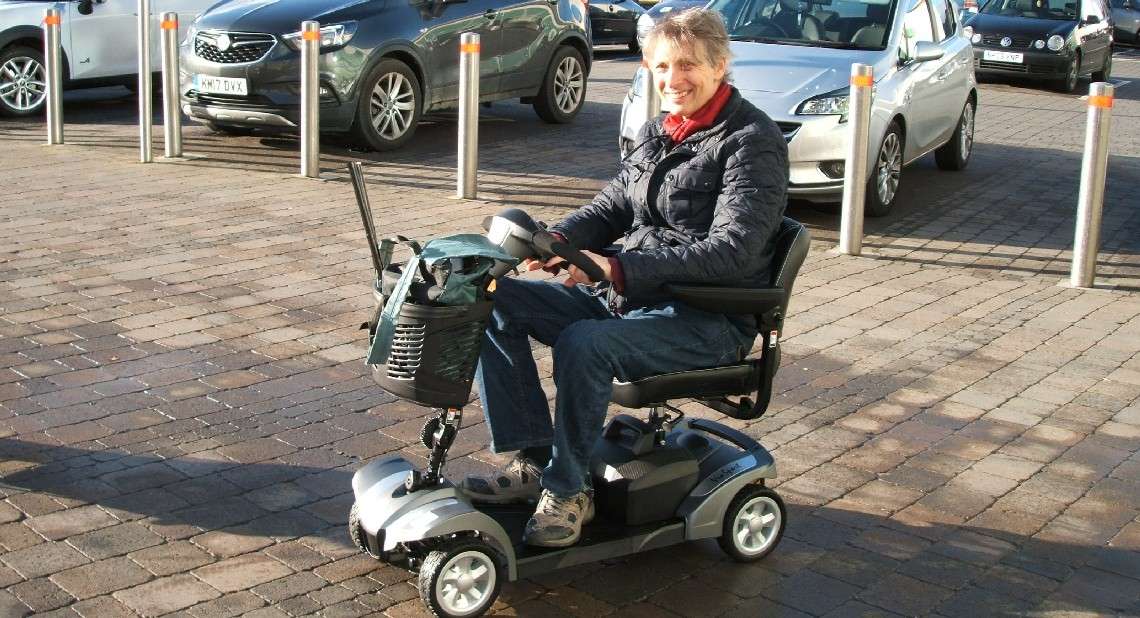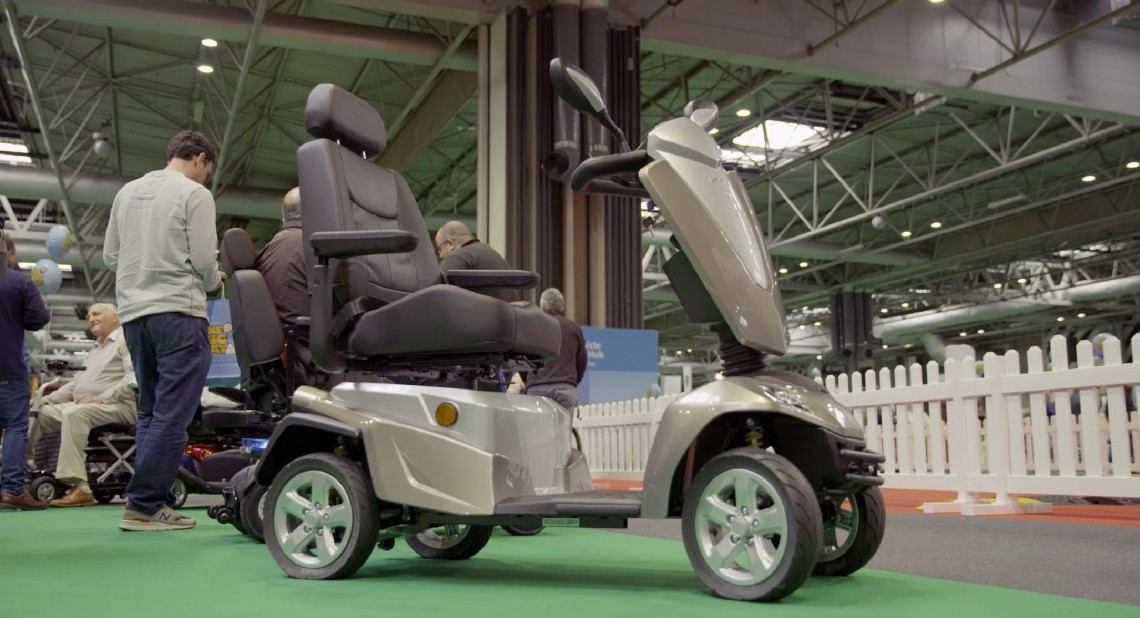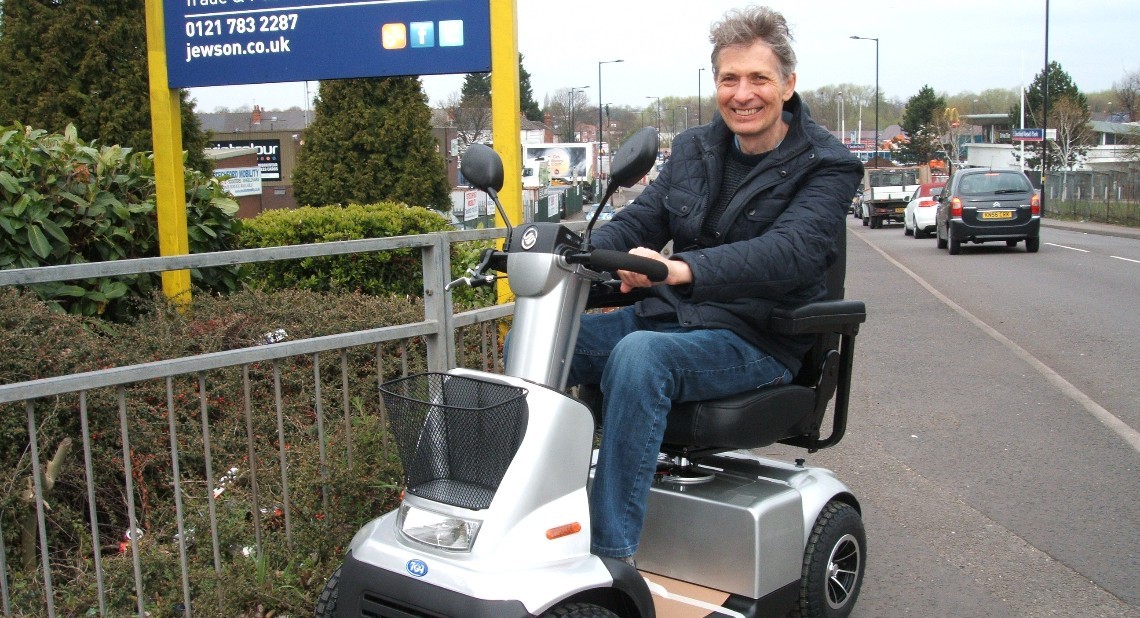In this article, Scheme customer Ian Cook looks at what the differences are between 3- and 4-wheeled scooters, and which type may be right for you.
When it comes to choosing a mobility scooter on the Motability Scheme, there are many different things you should consider. Size, speed, battery range and features are some of the most common things that people think about when deciding on a product.
Another choice that you can make is between a three or four-wheeled scooter. The Motability Scheme product search tool allows you to filter by the number of wheels a scooter has. The majority of scooters on the Motability Scheme have 4 wheels, although there are some 3-wheel options.
So what are the pros and cons of each type? Let’s go through each aspect individually.
Ease of manoeuvring
First of all, three-wheelers need less space when turning a corner, which can come in handy indoors and in especially confined spaces. Three wheels on a mobility scooter will mean an estimated 30 per cent smaller turning circle, making these scooters well suited for narrow corridors and other spaces where you need to make tight turns. As a three-wheeler has two wheels at the back and one at the front, some people find that this makes it easy to reverse indoors.
The disadvantage of a four-wheeled scooter compared to a three-wheeler is that on a four-wheeler you can have a more challenging time going round obstacles or moving through tight spaces without hitting the walls. You will notice this, particularly in shops, where getting round the displays and aisles can sometimes be a bit difficult.
This is because of the extra wheel at the front, which has the benefit of providing extra stability. However, as we will see below, this drawback for four-wheeled scooters is only really an issue when you are using them indoors.
Stability
When you look through the range of scooters on the Motability Scheme, you will notice that the vast majority of scooters are four-wheelers. There are several good reasons for this, one of which is that the extra wheel in the front provides extra stability. This is why they are suited for outdoor use, as they can handle rough ground and uneven pavements.
With three-wheeled scooters, they can sometimes feel less sturdy – although it depends on some other factors too, such as the size and build of the product. But generally, it makes sense that the extra wheel in the front can help the scooter to feel more evenly balanced. So you need to think about what you will be using your scooter for, in order to decide which is best for you.
Try them out
Having ridden both three- and four-wheeled scooters, I would say that the choice between them depends on you and what you are planning to use your scooter for. Getting a scooter is a bit like shopping for clothes – you need to find a size that fits you.
Remember that you’ll also need to consider other things besides the number of wheels, for example: the size of the product, its maximum weight capacity, how much storage space it takes up, etc. The Motability Scheme website has a list of things to help you choose the right product, which can be helpful if you don’t know where to begin.
I guess the best way to work these things out is to try out a scooter before you lease it. All Motability Scheme dealers offer a free home assessment and test drive for people who are looking to lease a scooter (or powered wheelchair) on the Scheme. This is a good way of making sure that you choose a scooter that matches your needs and lifestyle.
Personally speaking
On a personal note, I have observed there are far more four-wheelers around than three-wheelers. Based on this, I would conclude that for most people and in most circumstances four wheels are best.
The Motability Scheme meets your needs
Whatever your choice when it comes to scooters, the Motability Scheme can help. Simply exchange part of your weekly mobility allowance to lease a scooter, and remember that your insurance, maintenance and breakdown cover are all included.
- Learn more about the Motability Scheme
- Browse the range of scooters and powered wheelchairs
- Find a dealer
Related articles
Scooter and powered wheelchair driving tips
Top tips for using public transport with a wheelchair or scooter
How to look after your powered wheelchair
![]()







